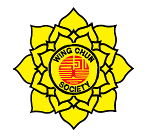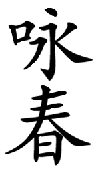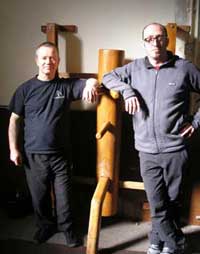Classes at The Wing Chun Society Port Talbot
A typical lesson will last around One and a Half hours it will start with a run through of the basic foundation syllabus as a warm up and to get brain in to gear. Then we might devote some time to work on our forms and move on to practice some application or Dok sau / Chi sau, then work on examining a principle or concept, usually reinforcing it with the use two man drill.
Port Talbot Wing Chun Syllabus
If you are new to the class, regardless of whether you have previous wing chun experience, you will be required to complete a foundation syllabus over 12 weeks. After this period you will be assessed, and assuming your standard, training ethic and attitude are correct, you will be invited to join our school. The school very much focuses on quality not quantity, so please keep this in mind - we do expect you to have the right mind set for the art. Following your foundation syllabus, you will then explore the wing chun hand forms (Siu Lim Tao , Chum Kiu and Biu Jee), Chi Sao Training, Wooden Dummy, butterfly Knives and Pole.
Below is a brief outline of the system.
The forms can be described in a myriad of ways but can only be understood by performing them regularly, studying them in depth and applying the lessons learned from them in application.
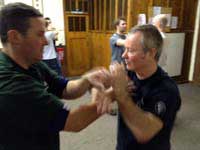 |
Chi Sao (Sticking Hands) An exercise to help develop sensitivity, reflexes and responses at close range and in contact with an opponent. |
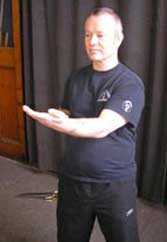 |
Siu Lim Tao (Little Idea, Small Thought) The bones of the system and contains most of the shapes, techniques and principles of Wing Chun. It must be explored in depth and practiced every day to attain its benefits. |
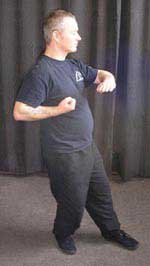 |
Chum Kiu (Seeking the bridge, Closing the Gap) Takes the shapes, techniques and principles of Siu Lim Tao, adds to them and puts them into motion. It also introduces some of the kicks of Wing chun. |
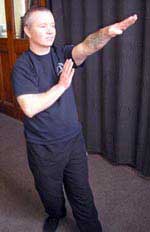 |
Biu Gee (Thrusting Fingers) Brings in new concepts and explores areas that the previous forms might have missed. |
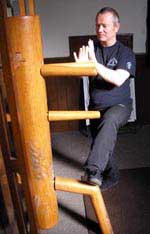 |
Wooden Dummy (Mook Yan Jong) The complete dummy sequence consists of seven sections and allows you to hone the principles, shapes, techniques, footwork and angles. It also contains the rest of the kicks of Wing Chun and allows you to execute them properly whilst learning correct structure, distance and timing. |
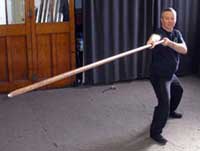 |
Pole Form (Luk Dim Boon Gwan) Six and Half Point Pole You might think that in this day and age that to learn how to use such a weapon would be a complete waste of time as you are unlikely to ever use it in a real life situation, after all who carries an 8 - 9 foot long pole around with them. You would be correct in thinking this, but incorrect in thinking that you could not carry the skills and power acquired from the use of this weapon with you. |
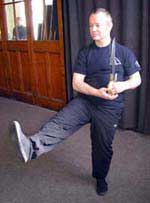 |
Knife Form (Bart jam Do) Eight cutting knives This is by far the most complex form to learn and consists of eight sections. On the surface it appears just to mirror the hand movements used in the rest of the system substituting the knives for the hands, there bye extending reach and allowing you to block harder weapons that would be impossible to block with hands alone. Below the surface there are stance, weight transference and power generation techniques that are completely missed by the casual observer. |
